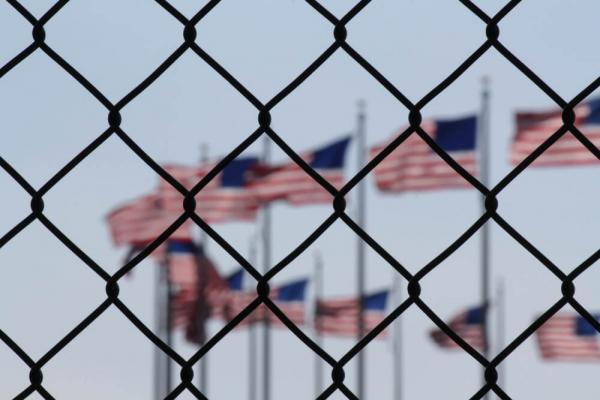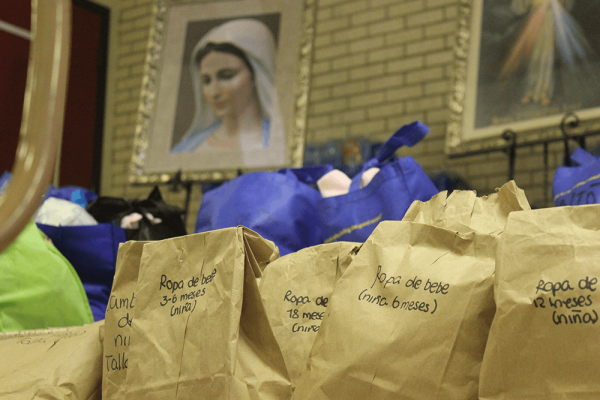Central American women who cross the southern border with their children to seek asylum in the U.S. are often sent to a federal facility in Dilley, Texas, where they are handed a complicated document — often in a language they don’t understand — explaining what to expect during the next 48 hours in detention.
The document is available in 10 languages, but even if an asylum seeker can understand the language, she may still be unable to decipher the legal terms and jargon explaining her next step: a credible fear interview. The mandatory, hour-long interview conducted by Customs and Immigration Service officers requires the asylum seeker to establish she’s been “persecuted or have a well-founded fear of persecution” based on race, religion, nationality, membership in a particular social group, or political opinion.
Regardless of the test result, an asylum seeker will have to attend a court hearing before an immigration judge. However, if she failed the test by not convincing the official that she has a “credible fear” of returning to her country, she has more to prove in the court hearing — or face deportation.
Women detained at the South Texas Residential Center, however, have some help navigating the process through the Dilley Pro Bono Project (DPBP), which has helped 61,454 clients prepare for their credible fear interviews according to DPBP advocacy manager Katy Murdza.
The group of volunteer lawyers, doctors, and advocates are trained to prepare asylum seekers in Dilley. Upon entering the federal facility, each asylum seeker receives the M-444 form describing the credible fear interview. But only within the past few weeks has distributing the paper form become commonplace, which Murdza called a tactic by the Trump Administration to “discourage people from seeking asylum.”
Before the paper form distribution, migrants had received an orientation that Murdza described as “basically like a PowerPoint presentation with a voiceover” as well as one-on-one interviews with asylum officers.
Previously, if an asylum seeker couldn’t understand the voiceover portion, she was able to receive an interpretation by phone in her first or second language. If no common language was available, the asylum seeker was given a positive credible fear decision and proceeded to a court hearing.
To make the credible fear interviews more comprehensible, DPBP volunteers walk asylum seekers through the process.
“We get 99 percent of people through the interview with a positive decision,” said Murdza. After an asylum seeker receives a “positive decision,” an immigration judge then hears her case, either granting asylum or ordering deportation.
The DPBP lawyers listen to migrants’ stories, telling them which details they should mention in their interviews, and how to hone in on one of the government’s listed categories for persecution. “It's not enough to say that you're afraid — it has to be for a specific reason,” Murdza said.
DPBP’s high success rate makes the interviews sound easy, but many women often face complications during the screening process: Their reasons for asylum don’t fit into one of the categories, the reason isn’t specific enough to them, they are distracted by their child’s declining health, or their stories lack details.
Murdza said she frequently sees women unable to provide many details about why they are fleeing her country because “her husband or her father protected her from some of the details, but now she needs those to be able to pass the interview.”
If her male relative lives in the U.S. or still lives in their home country, a DPBP member can set up a phone call to obtain that information. But if they were separated upon arrival at the border — since the South Texas Residential Center only houses women and children — DPBP probably won’t be able to contact him.
“Unfortunately, a lot of the time, we ask for that call. [Immigration and Customs Enforcement] does not coordinate it quickly enough, and then they pressure that person to proceed with their interview,” Murdza said.
Women may also exclude story details because they are traumatic. Dr. Alan Shapiro, a New York pediatrician and DPBP volunteerin July of 2018, said he performed mental health evaluations on many asylum seekers to analyze whether trauma had impaired the telling of their stories.
“Trauma interferes with the ability to tell sometimes, or retell a story, or retell it in a chronological way that doesn't change from version to version,” Shapiro said. “That is the effect of trauma on the brain,” Shapiro explained.
For a woman who received a negative decision on her credible fear interview, DPBP lawyers could cite her mental health evaluation results as evidence, explaining her exclusion of important details.
DPBP argues the entire credible fear interview step should be removed from the asylum process “because screening is expensive, it's too arbitrary, it's traumatizing,” Murdza said. “Our argument is that the government does not need to require them to go through it. There’s a legal process for them to just go straight to court.”
Like Murdza, the Migration Policy Institute argues that the asylum process should be more expeditious. Jessica Bolter, a MPI associate policy analyst, suggested “placing people who arrive at the border and request asylum into a separate stream of cases, rather than adding them to the court backlog, and having asylum officers fully adjudicate their cases, rather than using up the time and resources of both asylum officers and immigration judges in the current process.”
According to MPI, more migrants are filing credible fear claims now than in recent years. “The Trump administration’s policies have, ironically, promoted this element of the asylum system,” Bolter explained.
The Federation for American Immigration Reform, which advocates to limit immigration, believes credible fear interviews have potential as a screening process but lack an appropriate “standard of proof,” said Matt O’Brien, FAIR’s research director. “The net result is that the entire credible fear framework has simply become a way for migrants to obtain entry to the U.S., apply for a work permit, and start searching for alternatives to asylum.”
Got something to say about what you're reading? We value your feedback!





